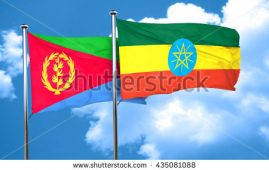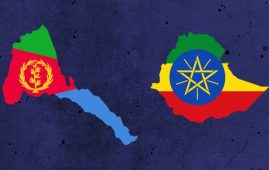Delayed seasonal rains are causing livestock loss and risk of food shortage in some parts of Ethiopia especially in the Afar and Ethio-Somali Region.
Due to under-performance of two consecutive rainy seasons (Belg and Meher) the food insecure people dependent on relief food assistance (2.9 million people at beginning of the year) is expected to increase significantly.
The US-funded FEWS-Net characterized the situation as “crisis”(or IPC-3) , while it is put in the higher “emergency”(IPC-4) level by the European Commission.
Based on the Integrated Food Security Phase Classification (IPC) system, IPC phase 1 is “Minimal/No Acute Food Insecurity” while “Stressed” is IPC phase 2.
“Crisis” and “Emergency” are the 3rd and 4th IPC phases, respectively, before “Famine/Catastrophe”, which is the fifth and worst stage of food insecurity (IPC Phase 5). The description, criteria and appropriate responses for each phases are listed here.
According to an update released yesterday by FEWS Net (Famine Early Warning System Network):
-
“Belg-producing areas in Southern Nations, Nationalities, and Peoples’ Region (SNNPR), northeastern Amhara, southern Tigray, and some areas in central and eastern Oromia will be in Crisis (IPC Phase 3) from July to September while areas in southern Afar and Sitti (formerly Shinile) Zone of northern Somali Region will be in “Crisis” (IPC Phase 3!) Only with the presence of humanitarian assistance through at least December.”
-
“Poor households in SNNPR, northeastern Amhara, southern Tigray, and some areas in central and eastern Oromia will be “Stressed” (IPC Phase2!) from October to December. While Southern Somali Region, with the presence of humanitarian assistance, will have a large majority of households able to address their food and nonfood needs and be in “Minimal” (IPC Phase 1!) from October to December.”
However, European Commission Humanitarian Aid Office (ECHO) reported on Thursday that food insecurity is widespread and rates of acute malnutrition are growing now above the international thresholds that define an emergency.
“In the southern pastoral areas, the situation has now slowly improved somewhat, the main crises areas are now concentrating in the North East and Eastern parts of the country: Eastern Tigray, Eastern Amhara (North and South Wollo, North Showa), Afar, Northern Somali region (Siti zone in particular), lowlands of Central and Eastern Oromia (West and East Hararghe, Arsi)” ECHO said.
National Metrology Agency of Ethiopia has last week said that many areas especially Afar State had delayed rainfall that affected the level of dams and local water storage resulting in loss of livestock and crops. The Agency also projected that there will be near normal rainfall level in the next ten days in most of the country, according to an FBC report.
On the other hand Kassim Keder, agriculture extension head at Dodotta Wereda in Arsi Zone has said that the Agriculture Bureau at Arsi is now receiving several complaints from farmers expressing their need for help, saying they can no longer manage to feed themselves and their children. “On August 6, 2015 the bureau sent a team to three Kebeles to assess the situation and returned with requests for aid, including requests from 25 households in one Kebele alone”, Kassim said.
Oromia State Livestock Development & Health Agency has reportedly requested additional funding from the federal government for the purchase of animal feed for seven zones. “We are going to make sure the production and productivity will meet the target. We do not think that the food stock in the country will fail to feed the country”, said the Communications Officer of the Ministry of Agriculture, Alemayehu Berhanu.
The Associated Press also reported last week that the government sees no risk of a food shortage quoting Agriculture Ministry spokesperson, Wondimu Filate, as saying, “The government has enough food stock and it is assisting farmers to continue their farming practices with improved seed items and drought-resistant crops.”
That assertion was confirmed on Wednesday at a press conference given by Redwan Hussein, Minister of Government Communication Affairs Office. The government spokesperson has told the press that aid is being distributed from emergency stock and that the government has allocated 700 million Birr to address the issue.
Redwan also said that the rainfall is getting stronger and there is enough food stock and the main focus is to maintain the level of annual production output.
According to the minister there were prior preparations done based on early indications of a shortage of rainfall and the areas affected are the ones who haven’t done enough preparations. There is no reason for inflation of food items as the lost output will be replaced from emergency stock, he said.
The government has called on international donors to extend additional support to ensure timely emergency response. A technical committee made up of the Ministry of Agriculture, Agricultural Transformation Agency, National Meteorology Agency and Ethiopian Agricultural Research Institute, has been formed to deal with the issue.
UN Office for the Coordination of Humanitarian Affairs, (OCHA), credited the weather disruption to the on-going El Niño, which is a band of warm ocean wind that develops from the central and east central Equatorial Pacific. The last time Ethiopia suffered from El Niño was in 2005/06. It is a recurrent weather problem that usually occurs at intervals of two to seven years, usually lasting from 12 months up to 18 months.
*************





